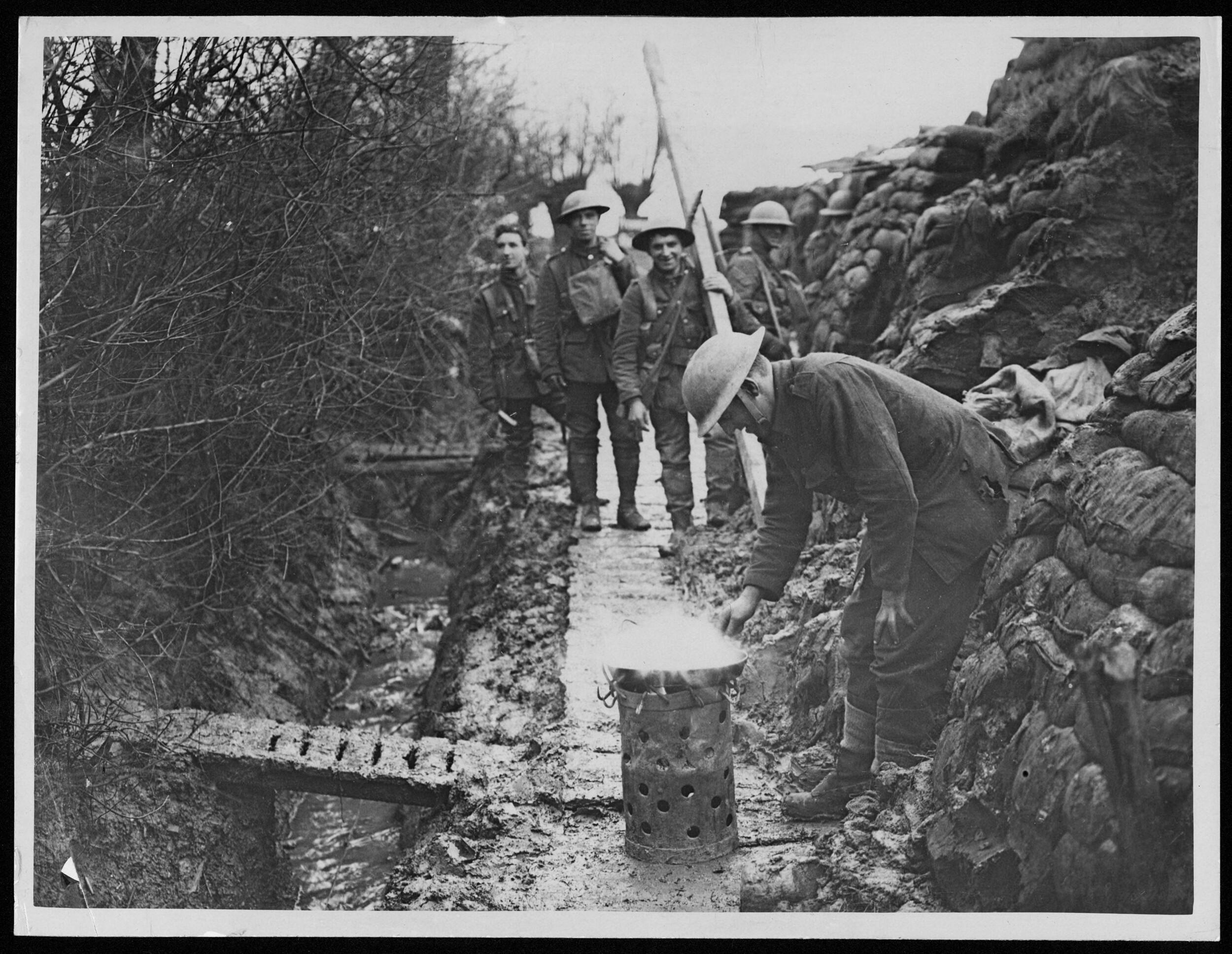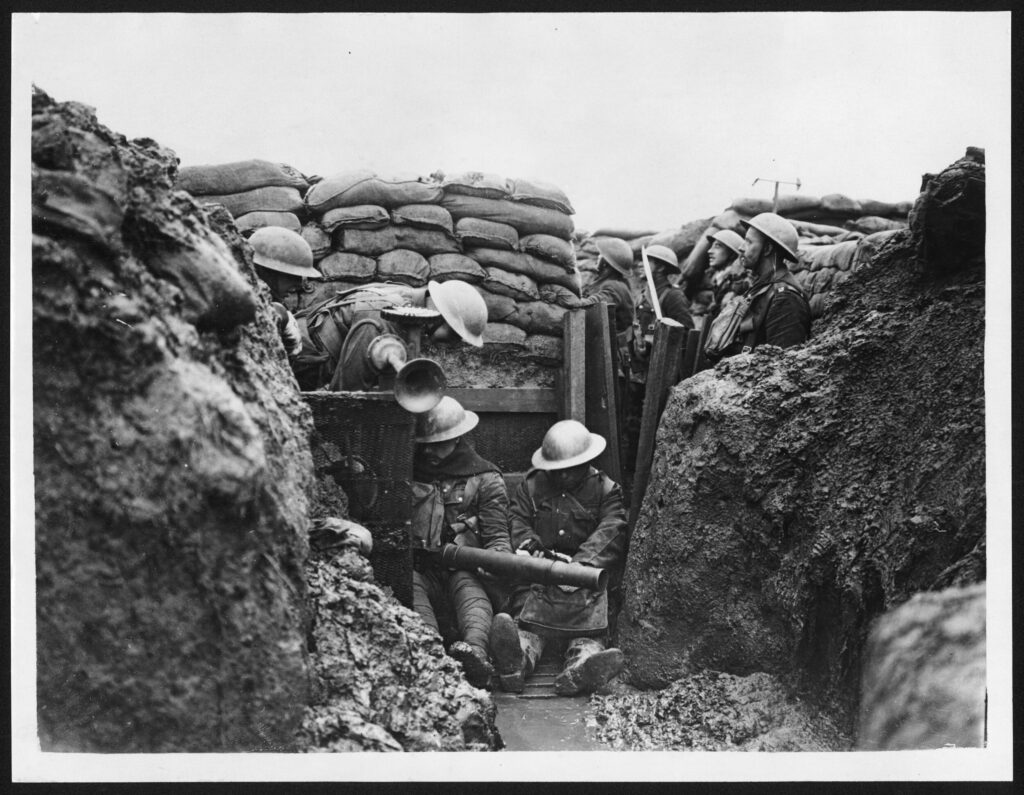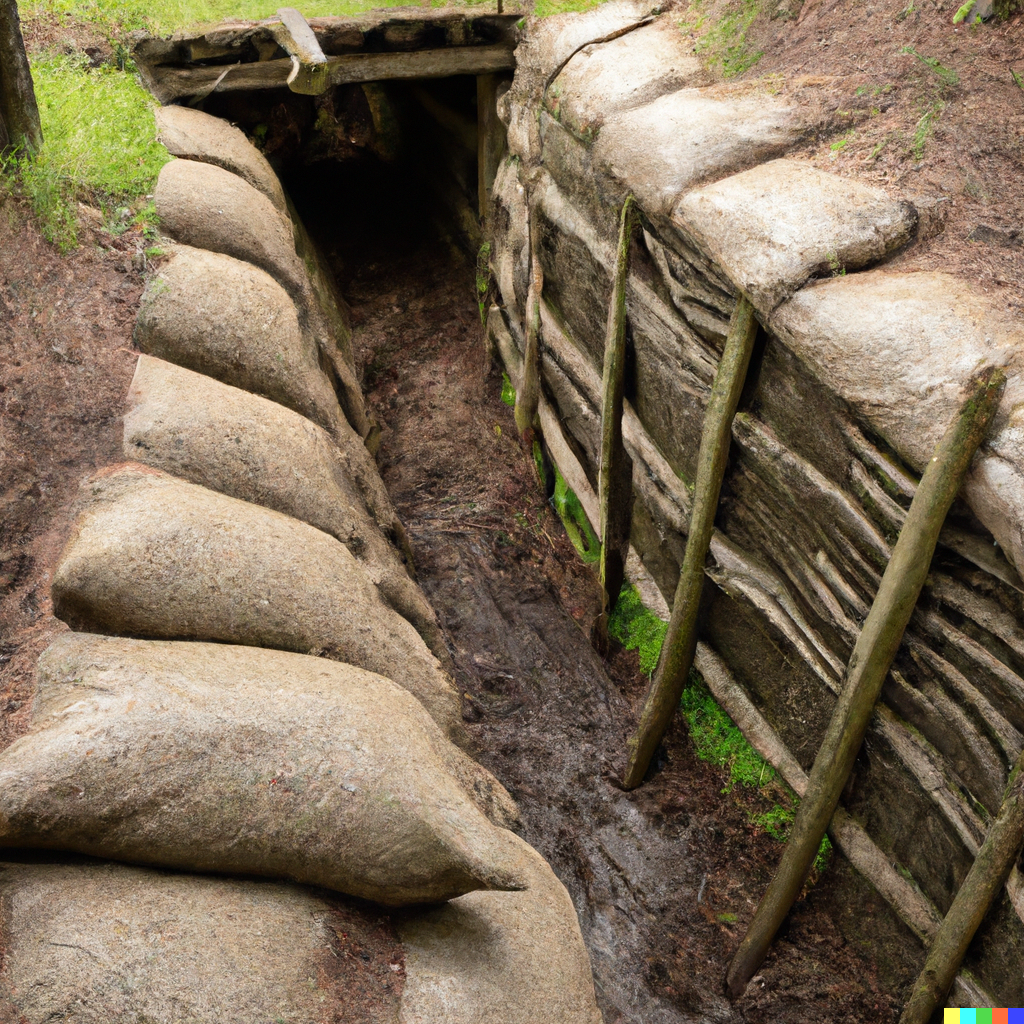At the heart of World War I was the grim reality of trench warfare. This brutal and entrenched style of combat defined much of the conflict.
Amid the mud, barbed wire, and constant threat of enemy fire, a crucial yet often overlooked aspect of trench life emerged—the drainage sump.
In the midst of the chaotic and harsh conditions, the drainage sump played a pivotal role in alleviating one of the most dangerous issues faced by soldiers: water accumulation.
This article explores the significance of drainage sumps in the context of trench warfare. It will reveal their purpose, construction, and the vital role they played during the hardships of World War I.
1. What was a trench Drainage Sump?

In the scarred the landscapes of World War I, drainage sumps emerged as a critical engineering solution to a persistent problem.
A drainage sump is a strategically constructed pit or reservoir designed to manage water accumulation within the trenches.
These sumps served as vital components of the trench infrastructure. They aimed to mitigate the detrimental effects of stagnant water on both the physical structures and the well-being of the soldiers.
2. The Challenges of Water Accumulation in Trench Warfare

Trench warfare, with its static and fortified positions, presented a unique set of challenges. These challenges were exacerbated by the relentless weather and geographical conditions.
One of the most formidable adversaries on the battlefield was water. Persistent rain and the water table often turned trenches into quagmires.
Water compromised the structural integrity of the trenches, leading to collapses and erosion. It also gave rise to insufferable living conditions for soldiers.
The corrosive impact of water on trench walls was compounded by the weight of the wet soil, further stressing the structural framework. Trenches that succumbed to the weight of waterlogged walls risked becoming ineffective as protective barriers against enemy fire and assaults.
3. The Purpose of Drainage Sumps
To confront the menace of water accumulation, drainage sumps were ingeniously designed.
These structures were strategically placed at low points in the trench system, acting as collection points for rainwater and groundwater.
The primary purpose of drainage sumps was twofold:
- To divert excess water away from the trenches, preventing flooding and erosion; and
- To provide a means of channeling water out of the trench system efficiently.
The construction of drainage sumps involved the use of pumps and gravity-driven systems to move water away from the trenches. Ingenious engineering solutions were implemented to ensure the functionality of these sumps – even in the face of relentless rain and adverse weather conditions.
4. The Construction of Drainage Sumps

Typically, drainage sumps consisted of dug-out pits reinforced with timber or metal shoring to prevent collapse.
The bottoms of these pits were lined with gravel or other permeable materials to facilitate water drainage while preventing the accumulation of silt.
Manual or mechanized pumps played a crucial role in efficiently extracting water from the trenches and redirecting it away from the front lines.
The success of drainage sumps relied heavily on their strategic placement within the trench system. Military engineers carefully selected locations based on the natural topography of the terrain and the specific needs of the trench network.
Drainage sumps were strategically positioned in low-lying areas where water naturally collected, ensuring that they served as effective catchment points for rainwater and groundwater.
Engineers continually refined drainage systems throughout the war, incorporating new technologies and methodologies to enhance their efficiency.
5. Consequences on Soldiers’ Health and Morale

The waterlogged trenches of World War I were more than just a physical obstacle; they became breeding grounds for a myriad of health issues that profoundly impacted soldiers’ well-being and morale.
Wet and unsanitary conditions led to a host of afflictions.These ranged from:
- Trench foot—a painful condition caused by prolonged exposure of the feet to
- Damp and cold conditions to
- Skin infections and respiratory problems.
Living amidst the squalor of mud-filled trenches, often devoid of basic amenities, eroded the psychological resilience of troops. The relentless struggle against the elements, coupled with the constant threat of disease, created an atmosphere of despair that permeated through the ranks.
Stagnant water in the trenches served as a breeding ground for a variety of pathogens, giving rise to a range of health hazards.
The close quarters and unsanitary conditions provided an ideal environment for the spread of diseases that could decimate entire units. Common ailments included waterborne infections, dysentery, and respiratory illnesses.
Ailing soldiers struggled to perform their duties, and the constant battle against the elements left many physically and mentally exhausted.
Recognizing the urgency of addressing these health hazards, the implementation of drainage sumps emerged as a crucial measure.
By effectively managing water accumulation, drainage sumps played a pivotal role in mitigating the health risks associated with waterlogged trenches, contributing to the well-being and combat readiness of the soldiers who endured the harsh realities of World War I.
In essence, drainage sumps were not merely tools to manage water; they were indispensable guardians of the very foundations of trench warfare. By addressing the structural challenges posed by water accumulation, drainage sumps became instrumental in upholding the defensive strength and resilience of the trenches that defined the landscapes of World War I.
7. Lasting Impact and Lessons Learned
In essence, drainage sumps were not merely tools to manage water; they were indispensable guardians of the very foundations of trench warfare. By addressing the structural challenges posed by water accumulation, drainage sumps became instrumental in upholding the defensive strength and resilience of the trenches that defined the landscapes of World War I.
The use of drainage sumps in World War I left a lasting impact on military doctrine and engineering practices.
The recognition that environmental factors, such as water accumulation, can significantly impact the effectiveness of defensive structures became a foundational lesson. Military planners learned the importance of integrating environmental considerations into the overall design of defensive positions.
Furthermore, the legacy of drainage sumps underscores the adaptability and innovation of military engineering in the face of challenging conditions.
The ability to develop and implement solutions, such as drainage sumps, in real-time demonstrates the importance of flexibility and creativity in addressing unforeseen challenges on the battlefield.






